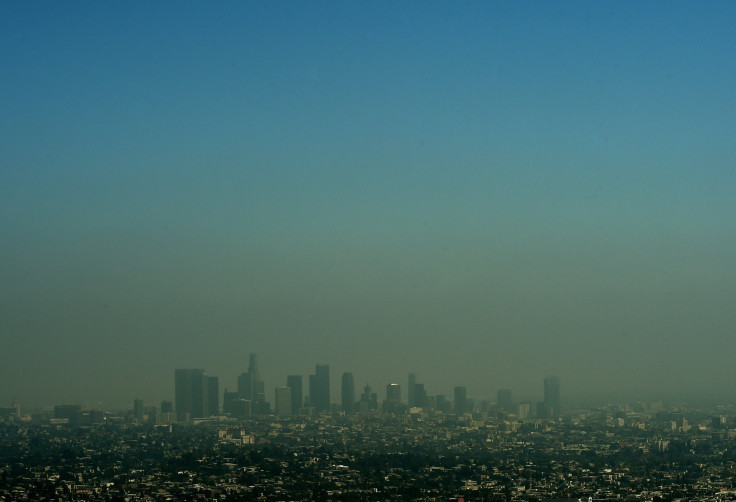US Air Pollution: Worst Cities For Clean Air Are In California, Report Says

While the number of unhealthy, polluted days has dropped in the past year, more than half of the U.S. population lives in areas with potentially dangerous air pollution, according to the American Lung Association's "State of the Air." Despite the dangers U.S. residents are facing, Republicans have posed legislative challenges to the Clean Air Act and other anti-pollution-related legislation.
“We’ve certainly seen dramatic improvements in air quality, but far too many cities and counties exceed levels where adverse effects occur," Paul Billings, senior vice president for advocacy at the American Lung Association, told the Guardian. "Progress should be faster. Americans deserve to breathe clean air, and there’s still a lot of work to be done.”
Around 166 million people live in areas with unhealthy ozone or particle levels, according to the report, and six out of 10 of the top cities for air pollution in the U.S. are located in the state of California. The most at-risk city in the U.S. for air pollution is Bakersfield, California, where its less than 900,000 residents are at increased risk of both pediatric and adult asthma, as well as cardiovascular disease.
The problem of Los Angeles smog — a phenomenon caused by air pollution that creates a blanket of haze across the city — is well-known. With many cars operating in a concentrated area, the metropolitan center has long been plagued by poor air quality. Worsening wildfires in California have added to the problem of air pollution throughout the state, as they can leave smoke and soot lingering in the air even days after they are extinguished.
As the problem of air pollution continues to plague more than half the population, some Republican lawmakers have looked to challenge elements of clean-air legislation. A bill sponsored by presidential candidate Ted Cruz, the Texas senator, would limit the government’s ability to regulate certain toxins and is seen as a challenge to the Clean Air Act.
© Copyright IBTimes 2025. All rights reserved.






















